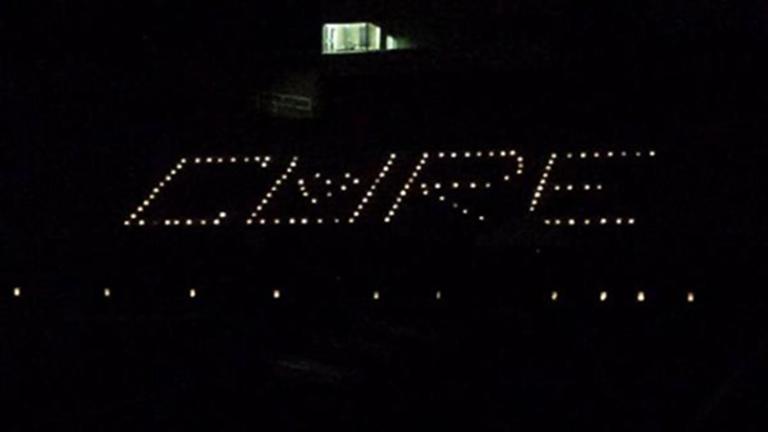
“About 100 students showed up throughout the night, even though it was raining.”
Rainy weather didn’t dampen enthusiasm for Kettering University students supporting cancer research, and Atwood Stadium provided an exciting new part of campus to host Kettering’s Relay for Life Sept. 12-13.
“About 100 students showed up throughout the night, even though it was raining,” said student Hayley Schuller, one of the organizers of the event. “We also had about 20 people from the Flint community attend.”
The annual event raised more than $10,000 and 10 cancer survivors were honored during the festivities. Organizers hosted this year’s relay at Atwood Stadium, a historic Flint venue that officially became part of Kettering’s campus last year.
“Atwood worked out great as a venue for this event,” Schuller said. “It allowed us plenty of space to bring our campus and the community together for the event and have some fun. We are hoping to continue to have Relay for Life at Atwood.”
Many organizations joined forces for the event, including realSERVICE, which ran the event, and Kettering Student Government and the Kettering chapter of the Society for Hispanic Professional Engineers (SHPE), which both made food donations.
“This event would’ve never been possible without the help of all of the campus organizations that started a team, including faculty and staff, Greek Life and several clubs on campus,” Schuller said.
Although heavy rain and cold weather caused the event to end earlier than expected, attendees participated in many events, including a luminaria ceremony.
“The ceremony is time to reflect on the reasons we relay, whether for ourselves, a family member, friend, teacher, etc.,” Schuller said. “It truly reminds people that everyone battles cancer in some way and we’re all there to fight back for those who have to hear the words, ‘You have cancer.’ As we walked around the track remembering and honoring those individuals, the stands were lit with the word ‘HOPE,’ but when we all came back together as one in the end, it displayed ‘CURE.’ This was the committee's way to remind individuals that we can make this difference.”